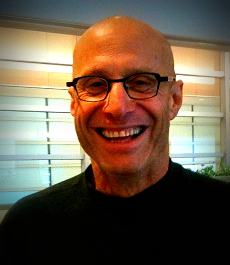A few days ago, I posted a video in which Zingerman’s co-founder, Paul Saginaw, said the following. “A business shouldn’t exist in order to create wealth. It should exist in order to give people better lives.” Well, that elicited a comment from Ann Arbor software entrepreneur Dug Song, who, among other things, had questions concerning the Zingerman’s business model. Here’s what Dug had to say.
I’m probably nitpicking, but Paul’s quote here is bizarre, and I worry, misleading – of course *businesses* exist to create wealth, hopefully for everyone involved. Great organizations are indeed mission-driven, but absolutely no business survives if it fails to create wealth (Zingerman’s open-book finances probably help align the company with this reality).
As Paul says, their business reached a point of stagnation *for the founders*, where their ambitions (and/or opportunity) outgrew the confines of their operation. They could have stayed small, excellent, and had “enough”, joie de vivre be damned (incidentally, I met Chip Conley, Joie de Vivre Hospitality founder last year, a remarkable entrepreneur in his own right!). Instead, they chose to invest / partner in other businesses, with what sounds like much more operational involvement (and fun! but maybe the same kind of screening) than arms-length investors.
That is to be seriously commended! Growth! Business and adventure! A pirate model of organization. Have fun storming the castle! Who has time for boring shit like golf, anyway?
I’m curious, though, about the distribution of Zingerman’s ownership and profits (cap tables, dividends / profit sharing), and the legal structure of its community of businesses (entities, partnerships, governance, etc.). Is it one holding company with Ari and Paul as king (through a manner of servant leadership) with lords tied to Zingerman’s estate, or are the operating companies (mostly) independent, with non-binding agreements for founders (how can they divest, if ever)? Do Zingerman’s/CoB *employees* (not just founders) generally have ownership stakes?
In tech startups, the cultural expectation is that *all* employees have ownership – but without liquidity, earlier employees (who may not actually have had as much impact as a later employee) get disproportionately rewarded for incurring more risk (maybe fair to the former, but probably not to the latter).
I first learned of an interesting model to deal with this from one of the investors in our oversubscribed Series B at Arbor: SAIC, one of the world’s largest military defense contractors ($10B+ annual revenue) – and a pioneering employee-owned company for over 40 years. Founder Bob Beyster, a major UM benefactor (see his namesake buildings on North Campus), wrote some interesting books on the subject of employee ownership, “ownership culture” and started the National Center for Employee Ownership and the Beyster Institute dedicated to the same, focusing on stock options and ESOPs as the concrete vehicle for employee ownership (not some hand-wavy anarcho-syndicalism of century prior, e.g. Leland Stanford). In a post-409a world, I’m guessing the transference of ownership in internal transactions is much more complicated/costly, but maybe that’s why SAIC is mostly a public company now, to achieve employee liquidity.
I remember having dinner one night with the head of their Casciano group (seriously, that’s what they called themselves, after the head of the business unit) and realizing that he was the progenitor of the Predator UAV program, among other less savory dinner topics. Regardless of ownership structure, founders have the responsibility to set the culture of an organization (and kudos to Paul and Ari for doing so) – or else you end up making baby-killing machines!
And, here’s Paul’s response, which was left in the comments thread, earlier today.
Dug, I was hoping that no one would notice that unfortunate statement. I cringed when I first saw the video. I misspoke when that quote was recorded. The interview went on for several hours over a couple of days – starting and stopping while I was at work. I meant to say that I believe the real purpose of business is not to create the “maximum profit” but rather to help improve people’s lives.
I also said in regards to “wealth” that business should work to create real “community wealth”. A wealth not measured in dollars alone but in diversity, clean air and water, safety, joy, the number young people who stay or return after college and open businesses, block parties, a thriving local economy, hours of volunteerism, the degree to which a community is self-reliant for its basic needs (food, energy, shelter, clothing, etc,), community celebrations, how well its most vulnerable members are cared for, etc.
I am happy to sit with you and go over how we are structured legally and spiritually. But it is a long conversation and it will generate many more questions. Here is a simple overview.
Ari and I have a holding company, Dancing Sandwich Enterprises, Inc., wherein resides all of our interest in the other businesses. All of those businesses (currently 8 with 2 more in the pipeline) are separate legal entities. The older ones ( Deli, Bakehouse and ZingTrain) are C Corps and the rest are LLC.’s.
Each business has at least one managing partner. There are currently 16 managing partners spread among those 8 businesses. The Zingerman’s Community of Businesses is not a legal entity, but we behave as a single company. All the partners meet every two weeks for 3 hours. We report out on all of our 3 bottom lines, great food, great service and great finance. We also make all decisions at this meeting that affect all the businesses. Because in the eyes of the IRS we are a single employer and in the eyes of the public we are one company there are certain areas where we need to all be on the same page – benefits, marketing, training standards, quality, look and feel, etc. All decisions are made by consensus.
We do not vote. You are in consensus if you are 80% ok with a proposal and its language and willing to support it 100%.
Ari and I own anywhere between 30 to 80% of each business. We also own the intellectual property, which we essentially license to the businesses. That is how we receive income. We do not take a salary out of any of the businesses. All of the managing partners run their respective businesses. Because Ari and I are partners, we participate in approving the annual plans, which are also a consensus decision. The annual plan for each business includes a salary and bonus plan for the managing partners and a gain-sharing plan for all of the employees. After all of that is paid out we then deal with Net Operating Profit. 10% of all profit is distributed to the non-profit sector with over 95% going to Washtenaw County. 5% goes into a relief fund for our employees where staff members who are experiencing a financial crisis can apply for funds. Another 10% goes to our support services company, Zingerman’s Service Network, and that money is used for bonuses and capital expenses. 20% can be distributed to the businesses’ partners according to % of ownership. The rest will be held as retained earnings to fund capital expenses, growth and tough times.
Buy-sell agreements, succession planning, transfer of ownership and employee ownership are all issues that we are sorting out. We have had an adhoc governance committee working on all of these for a couple of years and we feel that we are close to delivering a proposal to the Partners Group that will set the course for the foreseeable future.
I hope that answers a good deal of your questions. If you have an interest in knowing more about us, just let me know and we can get together.
As an aside, it makes me incredibly happy when my site can serve as a place for successful local entrepreneurs, like Paul and Dug, to come together, from wildly disparate industries, and kick around big, important ideas. As much as I enjoy the fame and fortunate that this site has brought me, I find stuff like this infinitely more gratifying.
 I’m probably nitpicking, but Paul’s quote here is bizarre, and I worry, misleading – of course *businesses* exist to create wealth, hopefully for everyone involved. Great organizations are indeed mission-driven, but absolutely no business survives if it fails to create wealth (Zingerman’s open-book finances probably help align the company with this reality).
I’m probably nitpicking, but Paul’s quote here is bizarre, and I worry, misleading – of course *businesses* exist to create wealth, hopefully for everyone involved. Great organizations are indeed mission-driven, but absolutely no business survives if it fails to create wealth (Zingerman’s open-book finances probably help align the company with this reality). Dug, I was hoping that no one would notice that unfortunate statement. I cringed when I first saw the video. I misspoke when that quote was recorded. The interview went on for several hours over a couple of days – starting and stopping while I was at work. I meant to say that I believe the real purpose of business is not to create the “maximum profit” but rather to help improve people’s lives.
Dug, I was hoping that no one would notice that unfortunate statement. I cringed when I first saw the video. I misspoke when that quote was recorded. The interview went on for several hours over a couple of days – starting and stopping while I was at work. I meant to say that I believe the real purpose of business is not to create the “maximum profit” but rather to help improve people’s lives.